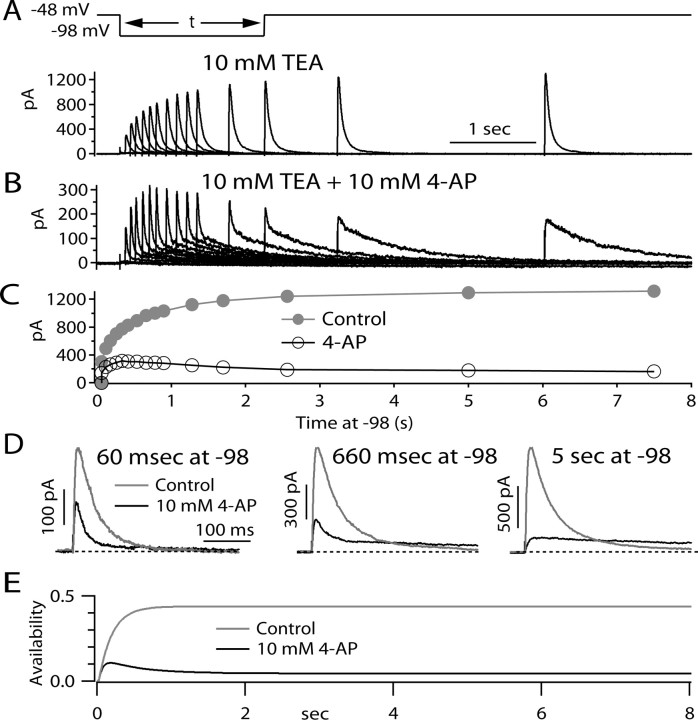Figure 9.
Evidence for unbinding and rebinding of 4-AP during long depolarizations and recovery. A, Currents elicited under control conditions (I A recorded in isolation in the presence of 300 nm TTX and 10 mm TEA) in response to a protocol in which channels start out in a state of steady-state inactivation at a holding potential of −48 mV and recover from inactivation during a pulse of varying duration to −98 mV, after which the degree of recovery is assayed by a return to −48 mV, eliciting I A of increasing size as the recovery period at −98 mV is prolonged. B, Currents in response to the same protocol in the presence of 10 mm 4-AP. Note difference in current scale. C, Peak test pulse current as a function of at −98 mV in control (filled circles) and with 10 mm 4-AP (open circles). D, Comparison of kinetics of test pulse currents with and without drug after recovery periods of 60 ms, 660 ms, and 5 s. Kinetics of control test pulse current do not depend on recovery time. With drug present, decay kinetics are similar to control after a short recovery, whereas after long recoveries, decay is very slow, as expected for a starting condition of drug bound channels. For intermediate times, test pulse current kinetics are biphasic, with one component similar to control and one much slower component. According to the model, the increasing fraction of the slow component represents drug binding as an increasing fraction of channels return from inactivated states to closed states with increasing times at −98 mV. E, Prediction of the model in Figure 8 for the time course of availability [fractional occupancy of available states (i.e., non-inactivated states without drug bound)] as a function of time after voltage is changed to −98 mV after a long period at −48 mV. In the steady state at −48 mV, 4-AP unbinds nearly completely because channels are in inactivated states. On return to −98 mV, initially channels recover from inactivation with a time course similar to control. As more channels recover into closed, resting states, these states bind 4-AP, resulting in a time-dependent decline in availability.

